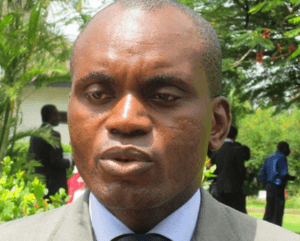African Court elects new President

The African Court on Human and Peoples’ Rights (AfCHPR), has elected Justice Sylvain Oré of Côte d’Ivoire as the new President and Justice Ben Kioko of Kenya as the Vice President to serve a two- year mandate term.
The two elected at AfCHPR’s 42nd Ordinary Session at Arusha, Tanzania, takes over from outgoing President, Judge Augustino Ramadhani (Tanzania) and Vice President Lady Justice Elsie Thompson (Nigeria), after they have served their full term.
The session also swore-in two newly elected Judges Lady Justice Ntyam Ondo Mengue from Cameroon and Lady Justice Marie Thérése Mukamulisa from Rwanda, who takes over the term of Justice Fatsah Ouguergouz (Algeria) and Justice Duncan Tambala (Malawi).
The Judges during the session would among other things examine about 70 applications and four requests for Advisory Opinions.
The AfCHPR is made up of 11 judges, nationals of Member States of the African Union elected in their individual capacity.
The President and Vice President are elected for the two years term, are eligible to be re-elected for another final term of two years.
The Court meets four times a year in Ordinary Sessions and may hold Extra-Ordinary Sessions.
The AfCHPR has rolled out strategic module to create a pool of knowledge-based Editors and Journalists to publicise its mandate to protect human rights on the Continent.
It forms part of the African Court’s Communication Strategy to ensure that Information and Communication policy forms part of its comprehensive strategy and must be placed at the heart of its work and not as an add-on to its activities.
The pool would be schooled on the broad framework of the African Union agenda on integration, development and shared values captured in the Agenda 2063 initiative and the African Governance Architecture (AGA).
Within the framework of the strategic module the scores of editors and journalists from Southern, Central, Western and Northern Regions would be trained from September 7 to September 10 in Arusha, Tanzania.
The training of editors and journalists would also serve as Training of Trainers.
The pool of skilful and knowledge-based journalists would be ready to publicise the mandate of the Court within the broad framework of the African Union agenda on integration, development and shared values captured in the Agenda 2063 initiative and the AGA.
It would focus on enhancing professional skills on how to report African Court stories for improved coverage and public awareness; and established a specific pool of journalists tagged as “Champions of AfCHPR’’.
It would help in building a network of professional editors and journalists that promotes the exchange of experience, competition for better quality of work and the development of senior journalists and editors who could act as future mentors for younger journalists interested in the work of the Court.
The joint training of four Regions is a result of a successful pilot training of 18 East African journalists and editors conducted from May 19 to May 22, 2015 in Arusha.
The four joint regional groupings identified for the trainings are: Southern Africa- Angola, Botswana, Lesotho, Madagascar, Malawi, Mauritius, Mozambique, Namibia, Seychelles, South Africa, Swaziland, Zambia and ZimbabweCentral Africa- Burundi, Cameroon, Central African Republic, Chad, Comoros, Congo, DR Congo, Equatorial Guinea, Gabon and Sao Tome Principe.
Western Africa- Ghana, Benin, Burkina Faso, Cape Verde, Côte d’Ivore, The Gambia, Guinea, Guinea Bissau, Liberia, Mali, Niger, Nigeria, Senegal, Sierra Leone, Togo and Northern Africa- Algeria, Egypt, Libya, Mauritania, Sahrawi Republic and Tunisia.
The African Court document explained that with the rapid growth of International Human Rights in recent years there has been a growing international trend of setting up regional and sub-regional human rights mechanisms such as the European Court of Human Rights and the Inter -American Court of Human Rights.
On the African continent, this trend has resulted into the creation of human rights bodies not only at the sub-regional levels but also at the continental level.
The creation of the African Court on Human and Peoples’ Rights (the Court) and the African Commission on Human and Peoples’ Rights was part of the international trend.
Source: GNA
